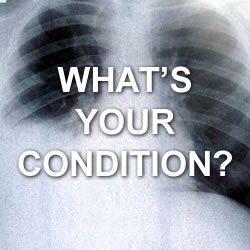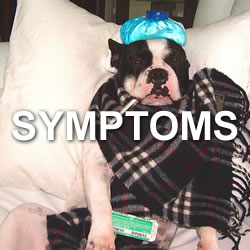Lymphatic Filariasis
I have seen LF in the flesh. You see patients who quickly become social outcasts because of the grotesque appearance of their limbs and the like. It moves you - Jean-Pierre Garnier

image by: Uniting to Combat NTDs
HWN Suggests
How to Cure The Diseases That Nobel-Winning Drugs Cannot
In the 1970s, William Campbell and Satoshi Ōmura discovered a class of drugs called avermectins that have helped to control two of the world’s most debilitating tropical diseases: lymphatic filariasis and onchocerciasis. For their efforts, they were jointly awarded the 2015 Nobel Prize for Physiology and Medicine this week.
But even while the duo are being justly lauded for their work, the diseases they have helped to control still affect more than 150 million people around the world. And the drugs they discovered have arguably reached the limits of their abilities, thanks to a critical limitation that other scientists are now trying to get around.
Lymphatic filariasis is caused…
Resources
How 2015 Nobel Prize drug might rid Africa of ancient scourges
Although not fatal, elephantiasis can severely disfigure its victim, resulting in profound social stigma. By distorting the limbs and other body parts, elephantiasis renders people too sick to work so that elephantiasis hinders economic productivity. However, there is good news. It was recently estimated that 139 million people in Africa received elephantiasis treatments in 2013. This was made possible by the Mectizan Donation Programme along with the World Health Organisation and the Global Programme to Eliminate Lymphatic Filariasis.
Elephantiasis and Wolbachia: The Bacteria Behind the Worms
For a long time, we thought that the worms themselves, and the microfilariae, caused these terrible responses to infection – that the battle between the human body and the worms caused blindness and disfigurement. But now it’s becoming clear that the real culprit is not the worms, but a type of bacteria living inside the worms. The problem is Wolbachia pipientis.
India Launches Massive Public Health Campaign to Eliminate Lymphatic Filariasis
India was certified polio-free in 2014. Today, the country has its sights set on another public health victory: the elimination of lymphatic filariasis, a neglected tropical disease (NTD) that threatens nearly half of its population. To meet this ambitious goal, the Indian Ministry of Health & Family Welfare (MOHFW) has launched one of the largest public health campaigns in India’s history to provide more than 400 million people with free medication that could protect them from lymphatic filariasis.
Learning to Live with a Disfiguring Disease
John Umaru is a health worker in Jos, Nigeria with the Carter Center. He has started a support group for villagers who suffer from lymphatic filariasis, a disfiguring disease transmitted by mosquitoes.
Parasite Causes Elephantiasis
The filariasis parasite is a roundworm called W. bancrofti. It's commonly carried by mosquitoes in the tropics. If kept in your system untreated it can cause massive swelling of the legs and feet, even elephantiasis.
Stomping Out Elephantiasis
It’s simple–in a way. We have to treat 1 billion people, giving them two different tablets, once a year for five years. I’ll spare you the science, but basically, if you treat everybody for five years, the disease actually disappears because the mosquitoes can’t pick it up any more, and you break the diseases’ transmission cycle. So while no one can cure LF, these tablets will prevent you from catching the disease, if you live in these endemic areas.
Table Salt Can Eliminate This Crippling Disease By 2020
Despite its devastating effects, LF is one of only a few infectious diseases that have the potential to be completely eliminated. Knowing this, Reimer, a former Cargill executive, and a team of Cargill employees partnered with the Reverend Thomas Streit C.S.C., the founder of the University of Notre Dame Haiti Program, to work toward this goal.
The Elephant Foot and the Nobel Prize
The award today went to scientists who created a pill that prevents a disfiguring and painful tropical illness.
Treating the Village to Cure the Disease
Like many neglected diseases, L.F. doesn’t kill its victims quickly. Instead, it hacks away at their quality of life. Every year, people lose 5.9 million years of good health to this disease.
 How to Cure The Diseases That Nobel-Winning Drugs Cannot
How to Cure The Diseases That Nobel-Winning Drugs Cannot
Don’t go after the parasitic worms that cause the diseases; go after the bacteria that those worms depend on.
Global Alliance to Eliminate Lymphatic Filariasis
The mission of the Global Alliance to Eliminate Lymphatic Filariasis is to bring together a diverse group of public-private health partners to support the Global Programme to Eliminate Lymphatic Filariasis by mobilising political, financial and technical resources to ensure success.
NTD Program
Lymphatic filariasis results from parasitic worms that are transmitted by the bites of mosquitoes in tropical and subtropical regions of the world. Several species of mosquitoes can transmit the disease.
The End Fund
Lymphatic filariasis (referred to as LF and also known as elephantiasis) is a mosquito-borne disease that is caused by parasitic filarial nematodes. Though infection usually is acquired in childhood, the grotesquely disfiguring effects of LF is greatest in adults.
Parasites in Humans
Lymphatic filariasis is a parasitic disease caused by thread-like worms called Wuchereria bancrofti. The parasite is carried from person to person by mosquitoes. 120 million people are infected in subtropical and tropical Asia (mostly in India), Africa, the Pacific and the Americas (mostly in Brazil, Haiti, Guyana and the Dominican Republic).
CDC
People with the disease can suffer from lymphedema and elephantiasis and in men, swelling of the scrotum, called hydrocele. Lymphatic filariasis is a leading cause of permanent disability worldwide. Communities frequently shun and reject women and men disfigured by the disease. Affected people frequently are unable to work because of their disability, and this harms their families and their communities.
NORD
Progressively increasing doses of any one of the major anti-parasiticide drugs is the treatment for the disorder. Among these drugs are: ivermectin, albendazole, and diethylcarbamazine. These drugs work to get rid of the larval worm, to inhiobit reproduction of the adult worm, or to kill the adult worm.
Patient
Filariasis is a group of diseases that affect humans and animals. The agent is a nematode parasite of the order Filariidae, commonly called filariae. They are usually classified according to the final habitat of the adult worms in the human host.
WHO
These parasites are transmitted to humans through the bite of an infected mosquito and develop into adult worms in the lymphatic vessels, causing severe damage and swelling (lymphoedema). Elephantiasis – painful, disfiguring swelling of the legs and genital organs – is a classic sign of late-stage disease.

Introducing Stitches!
Your Path to Meaningful Connections in the World of Health and Medicine
Connect, Collaborate, and Engage!
Coming Soon - Stitches, the innovative chat app from the creators of HWN. Join meaningful conversations on health and medical topics. Share text, images, and videos seamlessly. Connect directly within HWN's topic pages and articles.













